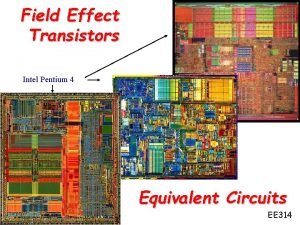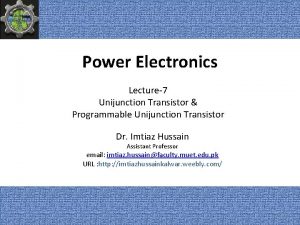Patterning Organic Semiconductor Single Crystal FieldEffect Transistors S

- Slides: 1

Patterning Organic Semiconductor Single Crystal Field-Effect Transistors S. Liu 1, A. Briseno, 2 S. C. B. Mannsfeld, 1 J. Locklin, 1 W. You, H. Lee, Y. Xia, 2 Z. Bao, 1 A. Sharei, S. Liu, 1 M. E. Roberts 1 1 Stanford University and 2 University of Washington, Berkeley Single-crystal organic field-effect transistors (OFETs) are ideal device structures for studying fundamental science associated with charge transport in organic materials and have demonstrated outstanding electrical characteristics. However, it remains a technical challenge to integrate single-crystal devices into practical electronic applications. A key difficulty is that organic single-crystal devices are usually fabricated one device at a time through manual selection and placing individual crystals. To overcome this difficulty, Bao et al. successfully developed two high-throughput approaches to pattern organic single crystal arrays. In the first method, organic crystals are patterned on electrode regions through solution (de)wetting on heterogeneously wettability-patterned substrates. This solution processing technique potentially has very low-cost. In the second approach, organic semiconductors are vapor-deposited on substrates using carbon nanotubes as templates. In both techniques, large arrays of single crystals OFETs with superior performance are successfully fabricated. Fig. 1 Schematic of the solution-based patterning process (left) and scanning electron micrographs (SEM) of patterned single crystal OFETs (right). a Fig. 2 Schematic of the vapor patterning process (left) and 10 images μm of patterned organic single crystals. SEM Stanford University MRSEC 0213618 1

